
Concept explainers
Explanation of Solution
Graph of functions using logarithmic scale:
8n:
Let the function be:
f(n)=8n
Take the logarithm on both the sides of the above function as follows:
log f(n) = log 8n
logf(n) = log n+ log 8 (1)
According to the given data, let us take log f(n)=Y , log n= X . Substitute the values in Equation (1):
Y=X+log8 (2)
Thus, from the above Equation (2), the value of Yinterval= log 8 , Xinterval =−log 8
The following is the graph representation corresponding to the values Yinterval= log 8, Xinterval =−log 8 on respective x-axis and y-axis respectively.
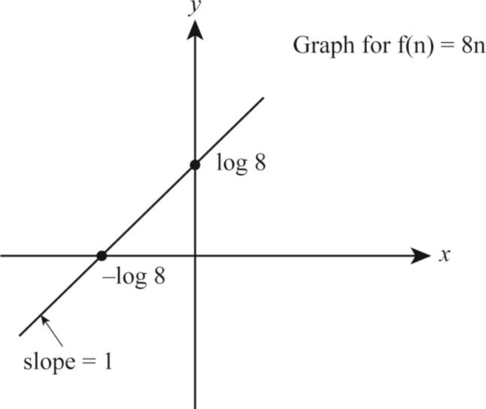
4n logn:
Let the function be:
f(n)=4nlogn
Take the logarithm on both the sides of the above function as follows:
log f(n) = log 4n log n
logf(n) = log 4+ log (nlog n)
logf(n) = log 4+ log n + log(log n) (3)
According to the given data, let us take log f(n)=Y , log n= X . Substitute the values in Equation (3)
Y=X+log(X) +log4 (4)
The following is the graph representation corresponding for the function f(n)=4nlogn on respective x-axis and y-axis respectively.
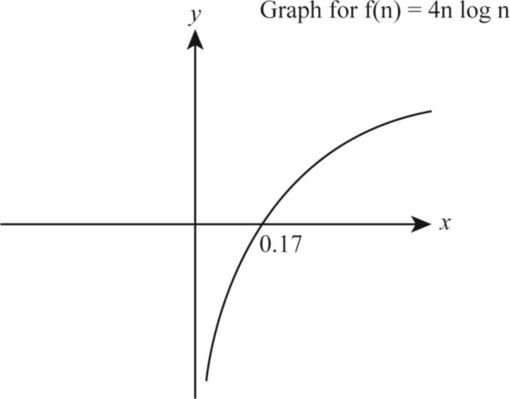
2n2:
Let the function be:
f(n)=2n2
Take the logarithm on both the sides of the above function as follows:
log f(n) = log 2n2
logf(n) = log 2+ log n2
logf(n) = log 2+ 2log n (5)
According to the given data, let us take log f(n)=Y , log n= X . Substitute the values in Equation (5)
Y=2X+log2 (6)
Thus, from the above Equation (6), the value of Yinterval= log 2 while substituting X =0, Xinterval =−log 22 while substituting Y=0.
The following is the graph representation corresponding to the values Yinterval= log 2, Xinterval =−log 22 on respective x-axis and y-axis respectively.
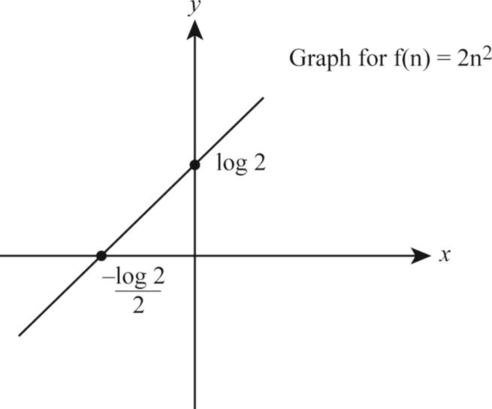
n3:
Let the function be:
f(n)=n3
Take the logarithm on both the sides of the above function as follows:
log f(n) = log n3
logf(n) = 3log n (7)
According to the given data, let us take log f(n)=Y , log n= X . Substitute the values in Equation (6)
Y=3X (8)
The following is the graph representation corresponding to the value on respective x-axis and y-axis respectively.
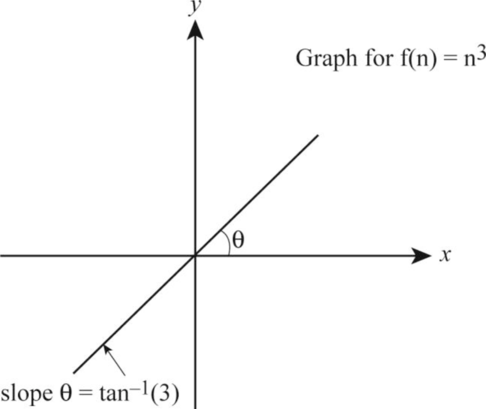
2n:
Let the function be:
f(n)= 2n
Take the logarithm on both the sides of the above function as follows:
log f(n) = log 2n
logf(n) = nlog 2
logf(n) = elog nlog 2 (7)
According to the given data, let us take log f(n)=Y , log n= X . Substitute the values in Equation (6)
Y= ex log2 (8)
The following is the graph representation corresponding to the value on respective x-axis and y-axis respectively.
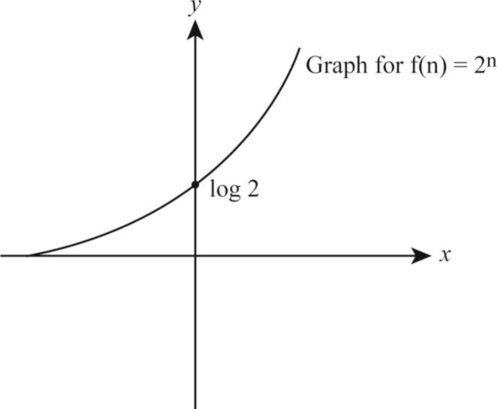
Want to see more full solutions like this?
Chapter 4 Solutions
Data Structures and Algorithms in Java
 Operations Research : Applications and AlgorithmsComputer ScienceISBN:9780534380588Author:Wayne L. WinstonPublisher:Brooks ColeProgramming Logic & Design ComprehensiveComputer ScienceISBN:9781337669405Author:FARRELLPublisher:Cengage
Operations Research : Applications and AlgorithmsComputer ScienceISBN:9780534380588Author:Wayne L. WinstonPublisher:Brooks ColeProgramming Logic & Design ComprehensiveComputer ScienceISBN:9781337669405Author:FARRELLPublisher:Cengage C++ Programming: From Problem Analysis to Program...Computer ScienceISBN:9781337102087Author:D. S. MalikPublisher:Cengage Learning
C++ Programming: From Problem Analysis to Program...Computer ScienceISBN:9781337102087Author:D. S. MalikPublisher:Cengage Learning- COMPREHENSIVE MICROSOFT OFFICE 365 EXCEComputer ScienceISBN:9780357392676Author:FREUND, StevenPublisher:CENGAGE L
 C++ for Engineers and ScientistsComputer ScienceISBN:9781133187844Author:Bronson, Gary J.Publisher:Course Technology Ptr
C++ for Engineers and ScientistsComputer ScienceISBN:9781133187844Author:Bronson, Gary J.Publisher:Course Technology Ptr Systems ArchitectureComputer ScienceISBN:9781305080195Author:Stephen D. BurdPublisher:Cengage Learning
Systems ArchitectureComputer ScienceISBN:9781305080195Author:Stephen D. BurdPublisher:Cengage Learning





